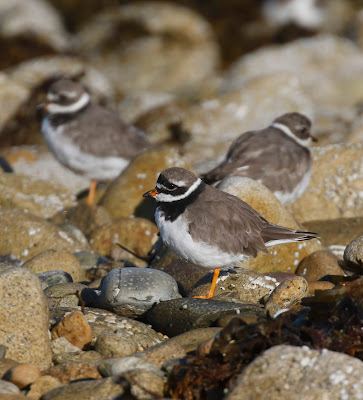It was our first morning on the island. The early light of dawn crept through a gap in bedroom curtains that had been carelessly drawn last night after an evening celebrating our return to Arran.
I stole out of the cottage and crossed the silent road below the front garden to the familiar stony beach opposite.
The wind from the northwest, that was so strong yesterday, had now subsided to a gentle caress and the waves striking on the shore no longer beat a roaring tattoo but, less troubled, met the stones along the shore in a never ending successional sequence, creating an irregular gentle susurrus of sound, each wave as it broke leaving its gift of white froth on the stones.
 |
| Dawn breaking over Kilbrannan Sound |
Opposite and beyond the running sea of Kilbrannan Sound, the undulating topography of The Mull of Kyntyre, holding its eternal promise of the west beyond, was still mysterious and magical in the early light of morning.
I walked along the road, silent and untroubled by any vehicle, as it always is at this time of day.The world about here consists of only a few humans and those were all asleep so I was alone in a landscape where no sound was unnatural.
 |
 |
| Eurasian Curlew |
 |
| Catacol Beach |
 |
| Turnstones |
 |
| Northern Gannet |
 |
| Ringed Plover |
Others preened and, as is often the way, the action was contagious amongst the flock. Occasionally a bird would raise its wings to their full extent above its body, a reflex action that is characteristic of many wading birds, the white underwing coverts shining in the sun and briefly negating the bird's marvel of concealment, whilst others would outstretch a white barred wing and orange leg, a slow, deliberate, comforting lateral movement of supreme grace and elegance.
It was now high water and the flock stood awaiting the turn of the tide. The wind had dropped to a sigh, the sea was silver calm and it was as if time had come to a brief halt and the world was transfixed. All was still.Waiting.
Silently, by means of a series of cautious steps, I edged closer to the resting flock. Reluctant to flee the nearest birds hopped on one leg a few feet further from me, there to stand once more, relaxed and content.
I moved no closer and found a private solace in this beautiful location and the close proximity of the resting plovers.
The gathering of these small birds became a re-assuring thread of certainty and natural order in the unravelling tapestry of an uncertain and troubled human world.
Bill Oddie said recently. 'If you are puzzled, angry or just sick to death of politicians. Why not switch to animals and nature ........ Concentrate on the natural world.'
How true.
The gathering of these small birds became a re-assuring thread of certainty and natural order in the unravelling tapestry of an uncertain and troubled human world.
Bill Oddie said recently. 'If you are puzzled, angry or just sick to death of politicians. Why not switch to animals and nature ........ Concentrate on the natural world.'
How true.






























Wonderful! x
ReplyDeleteSuch a contrast to the previous blog!
ReplyDelete